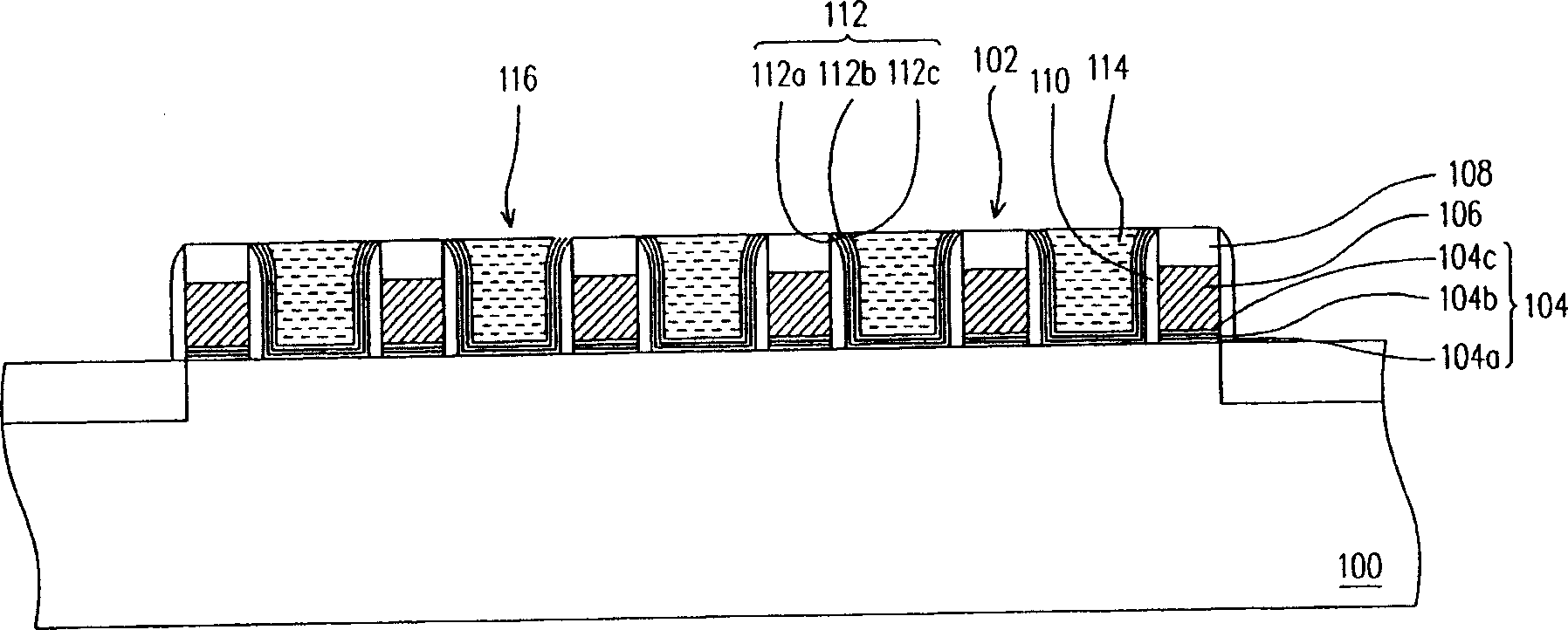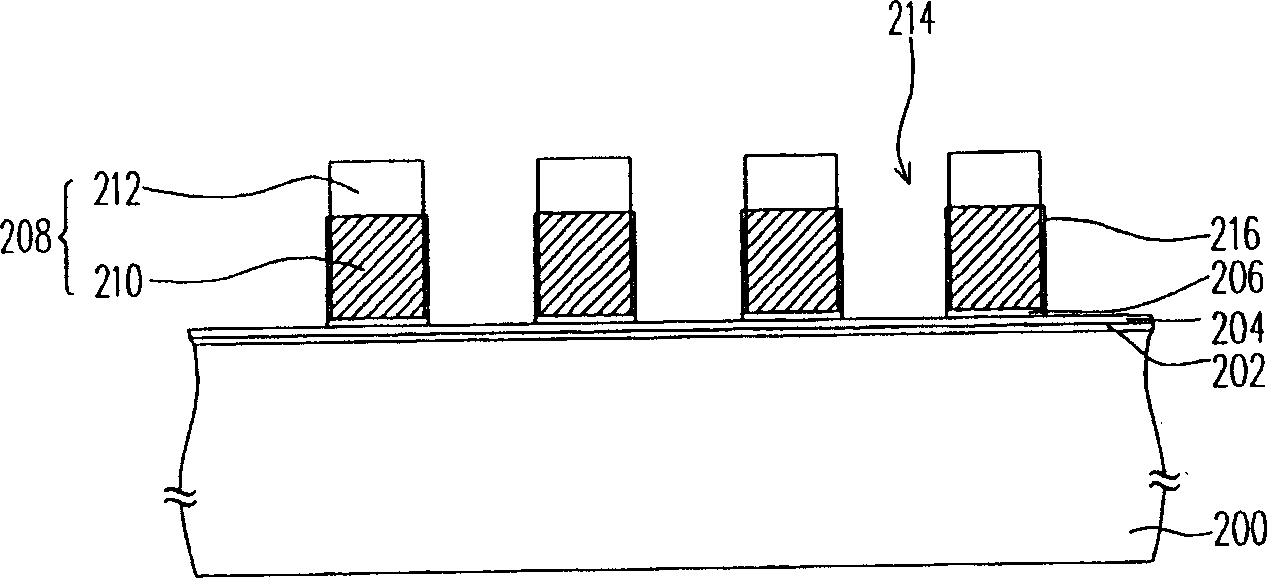Production of non-volatile memory
A manufacturing method and non-volatile technology, which are applied in semiconductor/solid-state device manufacturing, electrical components, circuits, etc., can solve the problem of inconsistent performance of the storage unit 102 and the storage unit 116, uneven thickness of the composite dielectric layer 112, and storage unit 116. problems such as poor reliability, to achieve the effect of improving poor quality, reducing costs, and simplifying process steps
- Summary
- Abstract
- Description
- Claims
- Application Information
AI Technical Summary
Problems solved by technology
Method used
Image
Examples
Embodiment Construction
[0051] Figure 2A to Figure 2D A cross-sectional view of the manufacturing process of a non-volatile memory according to a preferred embodiment of the present invention is shown.
[0052] First, please refer to Figure 2A, providing a substrate 200, the substrate 200 is, for example, a silicon substrate. Next, a bottom dielectric layer 202 , a charge trapping layer 204 and a top dielectric layer 206 are sequentially formed on the substrate 200 . Wherein, the material of the bottom dielectric layer 202 is, for example, silicon oxide, and its formation method is, for example, thermal oxidation. The material of the charge trapping layer 204 is, for example, silicon nitride, and its formation method is, for example, chemical vapor deposition. The material of the top dielectric layer 206 is, for example, silicon oxide, and its formation method is, for example, chemical vapor deposition. Of course, the bottom dielectric layer 202 and the top dielectric layer 206 can also be made...
PUM
 Login to View More
Login to View More Abstract
Description
Claims
Application Information
 Login to View More
Login to View More - R&D
- Intellectual Property
- Life Sciences
- Materials
- Tech Scout
- Unparalleled Data Quality
- Higher Quality Content
- 60% Fewer Hallucinations
Browse by: Latest US Patents, China's latest patents, Technical Efficacy Thesaurus, Application Domain, Technology Topic, Popular Technical Reports.
© 2025 PatSnap. All rights reserved.Legal|Privacy policy|Modern Slavery Act Transparency Statement|Sitemap|About US| Contact US: help@patsnap.com



